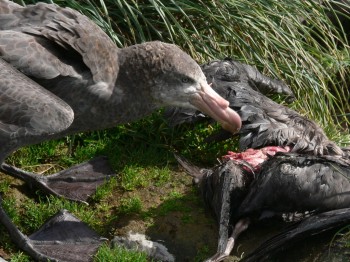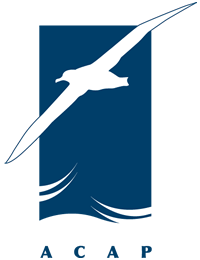Glenn Crossin (Department of Biology, Dalhousie University, Halifax, Canada) and colleagues, writing in the journal General and Comparative Endocrinology, have looked at the levels of corticosterone in feathers of giant petrels Macronectes spp. in relation to the costs of breeding.
The paper’s abstract follows:
“Life-history theory predicts that costs are associated with reproduction. One possible mediator of costs involves the secretion of glucocorticoid hormones, which in birds can be measured in feathers grown during the breeding period. Glucocorticoids mediate physiological responses to unpredictable environmental or other stressors, but they can also function as metabolic regulators during more predictable events such as reproduction. Here we show that corticosterone (‘‘Cort’’) in feathers grown during the breeding season reflects reproductive effort in two Antarctic seabird species (giant petrels, Macronectes spp.). In females of both species, but not males, feather Cort (‘‘fCort’’) was nearly 1.5-fold higher in successful than failed breeders (those that lost their eggs/chicks), suggesting a cost of successful reproduction, i.e., high fCort levels in females reflect the elevated plasma Cort levels required to support high metabolic demands of chick-rearing. Successful breeding also led to delayed moult prior to winter migration. The fCort levels and pre-migration moult score that we measured at the end of current breeding were predictive of subsequent reproductive effort in the following year. Birds with high fCort and a delayed initiation of moult were much more likely to defer breeding in the following year. Cort levels and the timing of moult thus provide a potential mechanism for the tradeoff between current and future reproduction.”

Northern Giant Petrel at Marion Island, photographed by Marienne de Villiers
With thanks to Richard Phillips.
Reference:
Crossin, G.T., Phillips, R.A., Lattin, C.R., Romero, L.M. & Williams, T.D. 2013. Corticosterone mediated costs of reproduction link current to future breeding. General and Comparative Endocrinology 193: 112-120.
John Cooper, ACAP Information Officer, 23 August 2013

 English
English  Français
Français  Español
Español